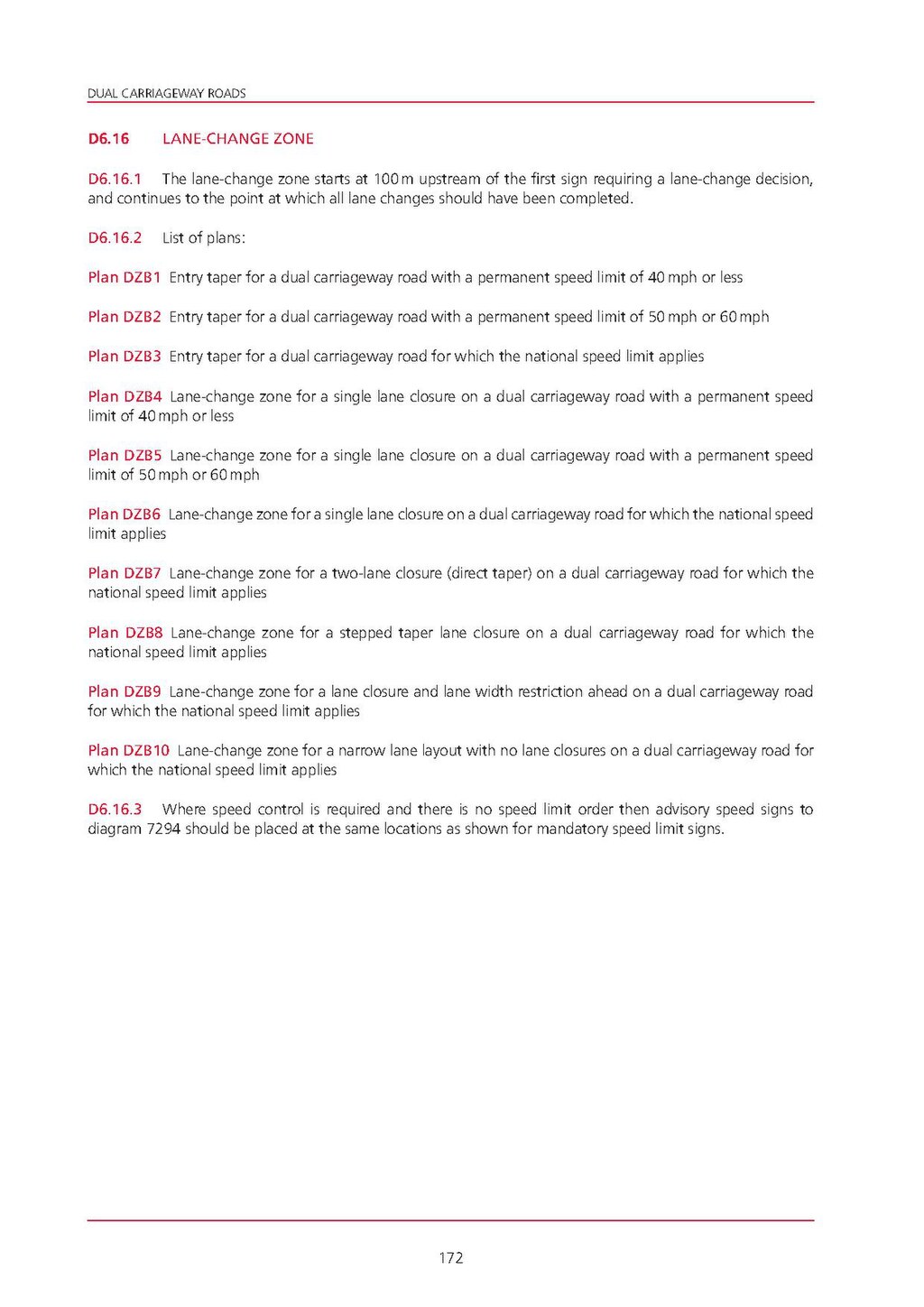D6.16LANE-CHANGE ZONE
D6.16.1 The lane-change zone starts at 100m upstream of the first sign requiring a lane-change decision, and continues to the point at which all lane changes should have been completed.
D6.16.2 List of plans:
Plan DZB1 Entry taper for a dual carriageway road with a permanent speed limit of 40 mph or less
Plan DZB2 Entry taper for a dual carriageway road with a permanent speed limit of 50mph or 60 mph
Plan DZB3 Entry taper for a dual carriageway road for which the national speed limit applies
Plan DZB4 Lane-change zone for a single lane closure on a dual carriageway road with a permanent speed limit of 40 mph or less
Plan DZB5 Lane-change zone for a single lane closure on a dual carriageway road with a permanent speed limit of 50 mph or 60 mph
Plan DZB6 Lane-change zone for a single lane closure on a dual carriageway road for which the national speed limit applies
Plan DZB7 Lane-change zone for a two-lane closure (direct taper) on a dual carriageway road for which the national speed limit applies
Plan DZB8 Lane-change zone for a stepped taper lane closure on a dual carriageway road for which the national speed limit applies
Plan DZB9 Lane-change zone for a lane closure and lane width restriction ahead on a dual carriageway road for which the national speed limit applies
Plan DZB10 Lane-change zone for a narrow lane layout with no lane closures on a dual carriageway road for which the national speed limit applies
D6.16.3 Where speed control is required and there is no speed limit order then advisory speed signs to diagram 7294 should be placed at the same locations as shown for mandatory speed limit signs.
172
